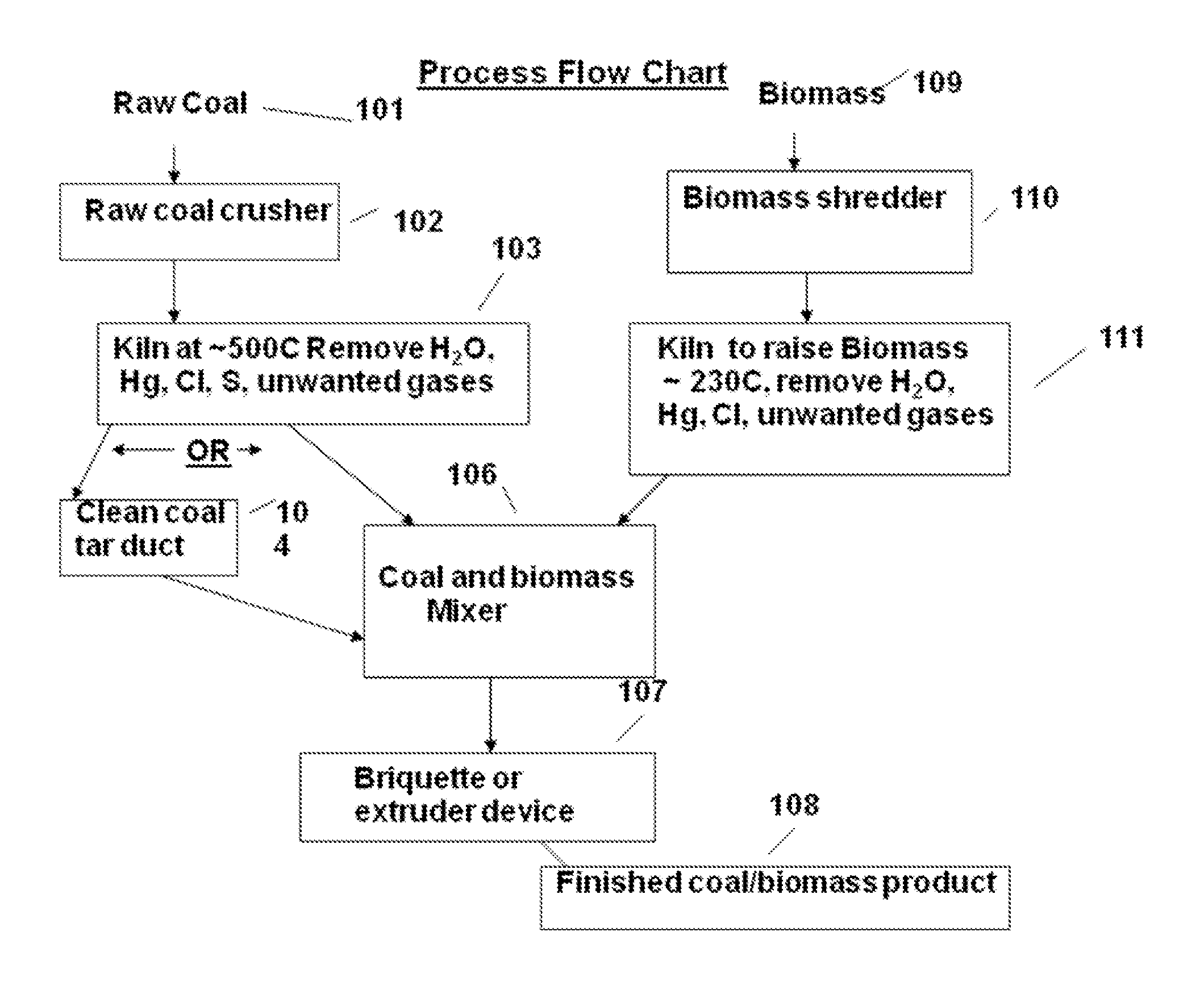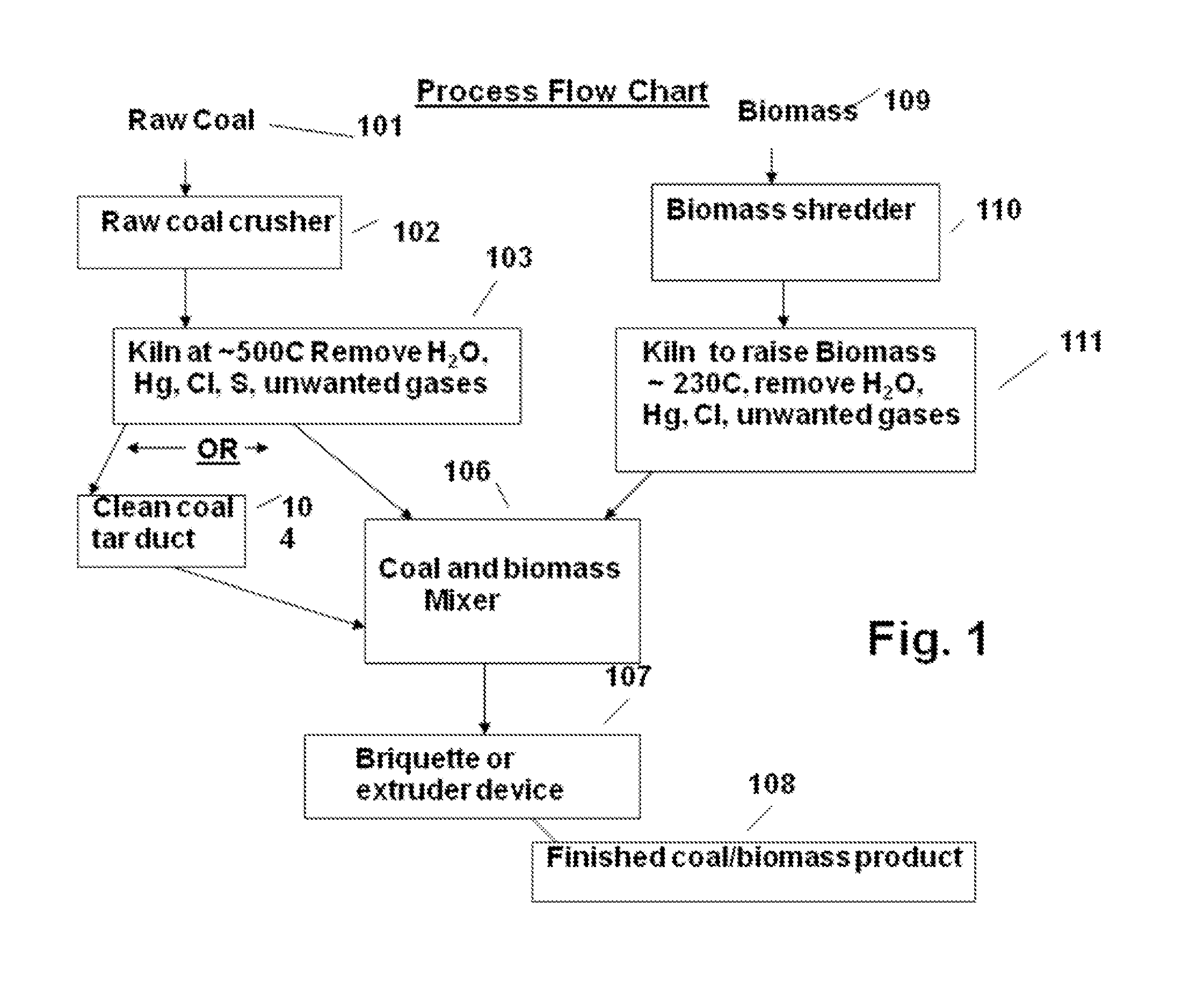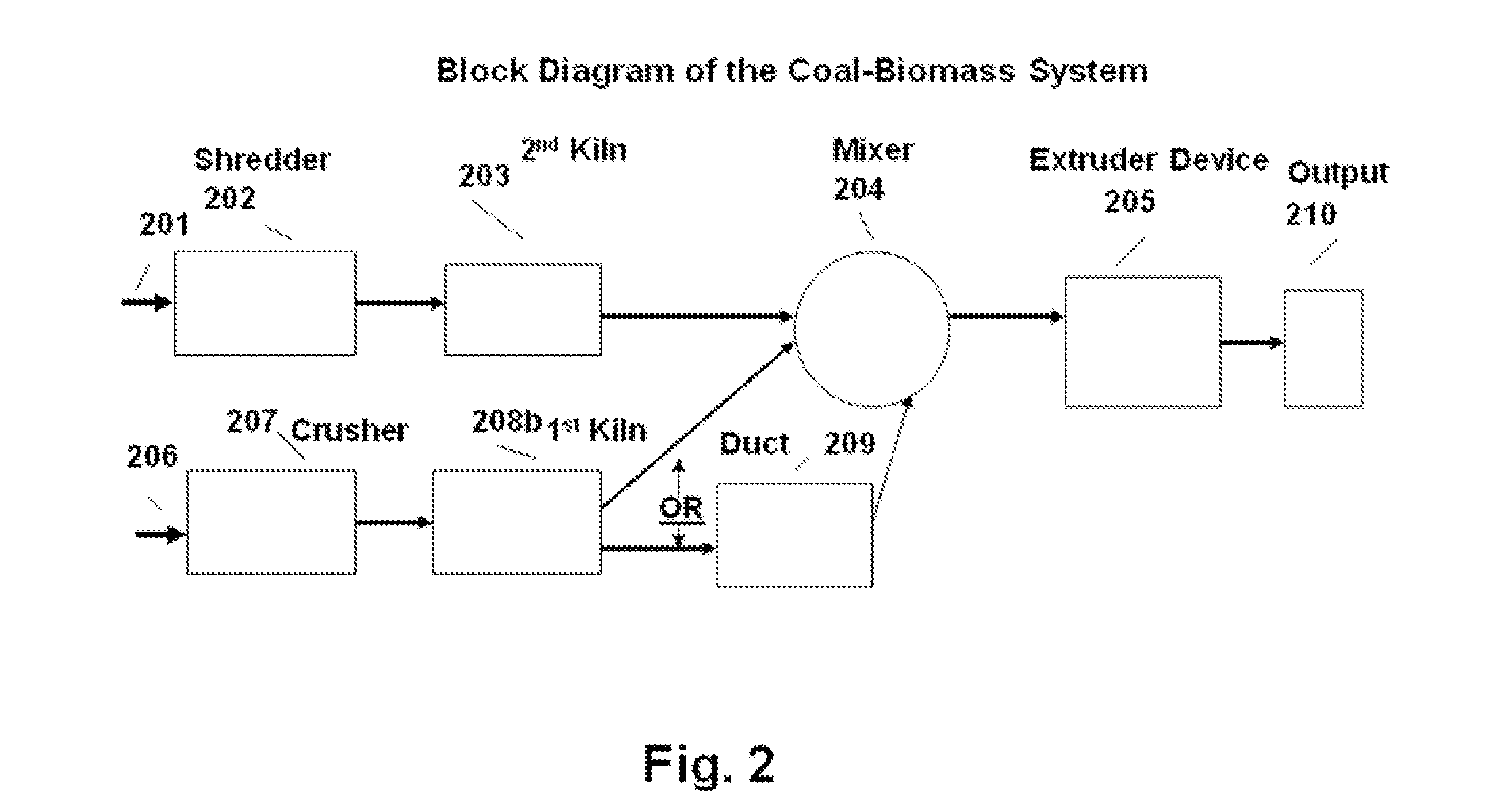System and Method for Obtaining Combinations of Coal and Biomass Solid Fuel Pellets with High Caloric Content
a technology of solid fuel pellets and coal, applied in the field of solid fuels, can solve the problems of hazardous emissions, reduced combustion efficiency, and high cost of solid fuel transportation, and achieve the effect of reducing emissions and efficient binding of coal and biomass
- Summary
- Abstract
- Description
- Claims
- Application Information
AI Technical Summary
Benefits of technology
Problems solved by technology
Method used
Image
Examples
Embodiment Construction
[0018]Referring to the flow chart FIG. 1, the coal-biomass process begins with coal 101 loaded into a raw coal crusher 102 to reduce coal to any desired size. The coal may be as small as ¼ inch in any dimension. Once crushed or ground, the coal contents pass from crusher 102 to the first kiln 103. The average temperature of the kiln is on the order of 500 C. which drives off moisture and certain volatiles, some of which are contaminants, the contaminant volatiles entrained or sequestered in a clean up station, while other volatiles are in the form of useful gaseous hydrocarbons. The valuable hydrocarbon gases are driven off from kiln 103 and can be transferred to clean coal tar duct 104 where the hydrocarbon gases are liquefied. This is an optional but useful step in the overall process. In all cases, the solid contents of kiln 103 are transferred to the coal biomass mixer 106. For the case where duct 104 is used to produce liquefied hydrocarbons, the liquid from 104 is transferred ...
PUM
| Property | Measurement | Unit |
|---|---|---|
| pressure | aaaaa | aaaaa |
| lengths | aaaaa | aaaaa |
| sizes | aaaaa | aaaaa |
Abstract
Description
Claims
Application Information
 Login to View More
Login to View More - R&D
- Intellectual Property
- Life Sciences
- Materials
- Tech Scout
- Unparalleled Data Quality
- Higher Quality Content
- 60% Fewer Hallucinations
Browse by: Latest US Patents, China's latest patents, Technical Efficacy Thesaurus, Application Domain, Technology Topic, Popular Technical Reports.
© 2025 PatSnap. All rights reserved.Legal|Privacy policy|Modern Slavery Act Transparency Statement|Sitemap|About US| Contact US: help@patsnap.com



